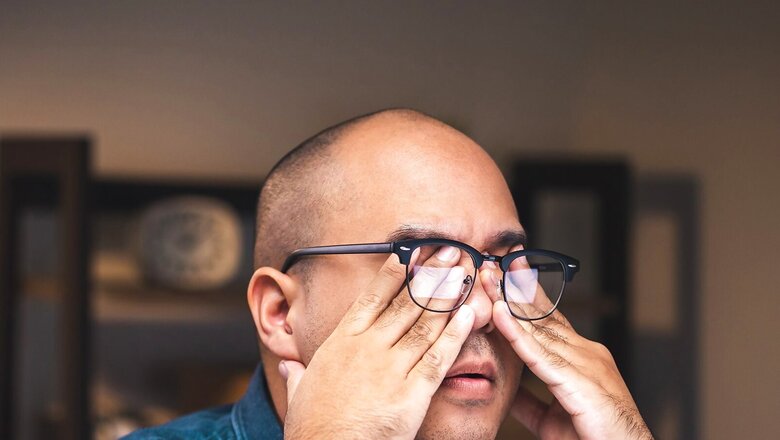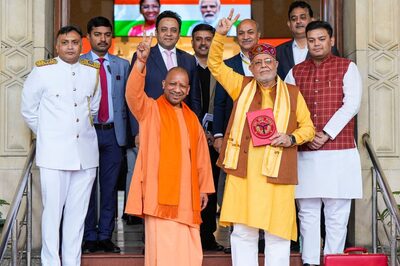
views
Take the NetraSuraksha Self Check here.
No one wants to think about going blind. Obviously. It’s an exceedingly unpleasant thought. You’d end up thinking about all the things you’d miss. The fact that you’d have to give up your job. The time you’d spend reskilling yourself to do something else (that too, at a time when you were finally beginning to make the big bucks!). The way your everyday life would change. All the help you’d need while you found your new bearings: would you need an attendant? Would your spouse need to quit as well? How would this affect your kids? How would this affect their education? Will you still be able to pay for college abroad? How much would it cost, medically?
Life would change pretty dramatically. But why are we talking about this now? Because here are some numbers you should know about:
- Roughly 463 million adults aged 20–79 years were living with diabetes in 2019, representing 9.3% of the world’s population in this age group. This number is predicted to rise to 578 million (10.2%) by 2030 and to 700 million (10.9%) by 20451.
- One in two (50.1%), or 231.9 million of the 463 million adults living with diabetes, (overwhelmingly type 2 diabetes, aged 20–79 years) are unaware that they have the condition1.
- In India, the total number of people with diabetes was estimated to be 77 million in 2019, 43.9 million of whom were undiagnosed1.
That last one should make you sit up – more than half the people with diabetes in India are walking around undiagnosed. As time goes on, this number is only going to increase. Between the commute, the long workday, the stress, the eating out, the no-time-for-exercising and the desk jobs, the incidence of diabetes is on the rise. Particularly in urban centres. But why are we talking about diabetes, when we were just talking about losing one’s vision? Here are some more facts:
- Diabetic eye disease is a much-feared complication of diabetes, consisting predominantly of Diabetic Retinopathy, Diabetic Macular Edema, Cataract and Glaucoma, but also double vision and inability to focus1.
- In most countries, Diabetic Retinopathy is acknowledged to be one of the leading causes of blindness in the working age population with devastating personal and socioeconomic consequences1.
- Based on an analysis of 35 studies worldwide carried out between 1980 and 2008, the overall prevalence of any DR in people with diabetes using retinal images was estimated to be 35% with vision- threatening DR present in 12%1.
Let’s look at those numbers again. More than half of the people with diabetes in India are undiagnosed. More than one-third are estimated to have some form of Diabetic Retinopathy, and one in eight will have Diabetic Retinopathy that is advanced and severe enough to threaten their eyesight.
Did those numbers make you blink? That’s what happened to us too. This is why Network18 launched the ‘Netra Suraksha’ – India Against Diabetes initiative, in association with Novartis, to bring together the best minds in medicine, policy making and think tanks to bear on the problem of Diabetic Retinopathy.
One of the first things we learned about Diabetic Retinopathy was that it is asymptomatic in the early stages. This, unfortunately, is the stage where treatment is most effective. By the time symptoms begin to appear, there is already some degree of vision loss. The bad news is that the damage is irreversible. Once diagnosed, the patient can manage the disease very effectively, particularly if they are diligent in following their doctor’s instructions.
The other thing that we learned was that Diabetic Retinopathy is very easy to detect. All it needs is a simple, painless, routine eye test (at the eye doctor, not the spectacle shop!). It became Netra Suraksha’s mission to get the word out there – through round table discussions, explainer videos and articles. You can access all these materials at the Netra Suraksha initiative page on News18.com. We also designed an online Diabetic Retinopathy Self Check Up to assess your risk.
That’s where we recommend you begin. Take the online Diabetic Retinopathy Self Check Up, and then read up on the Netra Suraksha initiative page. Schedule an eye test with your doctor for yourself and the family. While you’re at it, schedule a blood test too, and check your sugar levels. Mark these tests on the family calendar – maybe even bundle them with dates that are significant to you, so you won’t forget to repeat them every year.
Spread the word: reach out to your friends and family, and share this information. Be a part of the solution. Scroll up and read the numbers again. If we’re going to beat this disease, we need every single person with diabetes to make the annual eye test a habit. Let’s fight the good fight against Diabetes and Diabetic Retinopathy. And let’s win.
References:
- IDF Atlas, International Diabetes Federation, 9th edition, 2019
Read all the Latest India News here



















Comments
0 comment